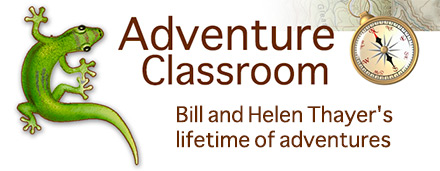


THE PANTANAL
The Pantanal, the world's largest freshwater wetland, is twenty times the size of the Florida Everglades. The name comes from the Portuguese word pântano, meaning wetland, bog, swamp, quagmire or marsh. Located mostly within the Brazilian state of Mato Grosso de Sul, it also extends into Mato Grosso and portions of Bolivia and Paraguay. The sprawling wetlands cover an area estimated at 75,000 sq miles. Roughly 80% of the Pantanal floodplains are submerged during the rainy seasons, nurturing a biologically diverse collection of aquatic plants and helping to support an immense array of animal and bird species.

Bill and I flew into Manaus, a large city in the center of the Amazon, then we flew south to land at a small airstrip in the northern area of the Brazilian Pantanal. Our two month long quest was to kayak 1,500 miles of the Paraguay River and many of its tributaries. The humid tropical heat followed us from the Amazon and covered us in an oppressively dense blanket of damp heat.
The region boasts of the highest concentration of wildlife on the continent. Life in the Pantanal including that of humans follows the ebb and flow of an ecosystem that changes with the seasons according to rainfall. Each year torrential rains fill the Pantanal’s giant basin, creating a vast flooded landscape. When the downpour subsides, water slowly drains into the Paraguay River. Even pantaneiros, the local cowboys, move their cattle herds in sync with the water. Although the Pantanal's array of bird life is astonishing in its variety, the fauna isn't limited to birdlife. Inhabitants include the elusive jaguar, giant anteaters, piranha, monkeys, and anacondas—the world’s largest snake.

Our first campsite on a river bank proved to be spectacular. As darkness fell the river water came alive with dozens of caiman eyes moving about as they hunted the abundant population of fish. The sight made us aware of the need for caution in an area almost overrun by these fast moving crocodile like creatures.
I was anxious to photograph parrots. I need not have worried. There were parrots of many colors and sizes flying overhead, while others squawked loudly as they squabbled in the trees.
On our first day we encountered a family of capybaras, the world's largest rodent. About two feet tall and around 165 pounds they resemble a giant brown colored hamster nibbling on the vegetation.
As we silently glided along in our two kayaks we encountered more caiman, river otters, all sorts of bird species, an amazing array of animals and one day even a quick glimpse of the reclusive jaguar.

Day after day the vastness of the depth and vitality of the Pantanal flora and fauna revealed itself. Around every corner we were greeted by new surprises. However this seemingly untouched paradise of wildlife is not without its problems.
Once treated as a wasteland, ranchers have developed land that over the last several years, because of overgrazing, are slowly turning into dust bowls. Clearing land and burning native plant life for cattle raising is destroying the natural habitat of many species including the hyacinth macaw parrot. There are concerns regarding the effect of cattle grazing on soil erosion and the loss of wildlife refuge. The impact of cattle grazing on the Pantanal is a hotly debated subject.
Mining and its use of mercury are polluting waterways. High levels of mercury have been found in fish and fish eating birds.
Daily, over two-million inhabitants of the Upper Paraguay River Basin contribute millions of gallons of untreated wastewater to the Pantanal. The problem will become increasingly serious as the population is expected to double by 2025.

Off serious concern is loss of biodiversity. At least 50 native species are reported threatened or endangered in the Brazilian Pantanal. Such large predators and herbivores as the giant river otter, manned wolf, ocelot, cougar, jaguar, giant anteater, marsh deer and giant armadillo used to be found in large numbers in the Pantanal. Today, these are all listed as endangered or threatened with extinction.
Although big-game hunting is illegal in the Brazilian Pantanal and was outlawed 1967, significant poaching continues. Although it has slowed, mammals like the jaguar continue to be hunted. The hyacinth macaw, blue and yellow macaw, red and green macaw blue-fronted parrot, and toco toucan are captured for resale as pets, all part of a lucrative global business of illegal animal and bird trafficking.
Substantial over-fishing is also a problem. There are laws that regulate fishing. However, due to the remoteness of many areas, enforcement is often inadequate or impossible. Once species and habitat is lost, recovery is almost impossible. This unique and fascinating region deserves to be preserved for future generations.
Back to [Home Page]
